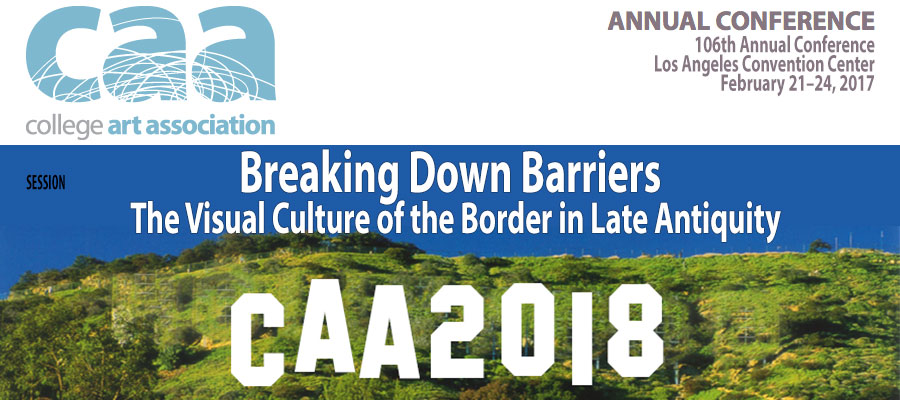Breaking Down Barriers: The Visual Culture of the Border in Late Antiquity, 106th College Art Association Annual Conference, Los Angeles Convention Center, February 21–24, 2018
The visual culture of Late Antiquity (c. 200-700 CE), the period during which the polytheist Roman state transformed into Orthodox Byzantium, has often been considered in terms of large-scale developments within the empire, driven by shifting religious preferences and associated political, social, and cultural changes, or in terms of the relationship between center and periphery. However, while scholars of Byzantine and later medieval art have long been interested in artistic interactions across borders, between Byzantium and its neighbors, historians of late antique art have been less focused on the border’s role in defining, limiting, or diffusing artistic and architectural forms.
In light of the contemporary rise of nationalism and growing anxiety over the permeability and permanence of borders, this panel aims to investigate the role of the border in the art and architecture of the late antique Mediterranean and beyond. To what extent did borders act as barriers to the movement of people and ideas or instead facilitate artistic interaction between different populations? Did borders strengthen or weaken “national” artistic preferences and tastes? How did visual culture contribute to the formulation or performance of identity within contested areas or frontier zones? Did cultural boundaries operate in the same way as political ones?
Papers in this panel might consider the role of borders or frontiers in shaping artistic interaction in the Mediterranean region in the period; objects or buildings produced in border regions; artists, objects, raw materials, or ideas in motion; or artworks as diplomatic gifts.
Session Chairs
Sean V. Leatherbury, Bowling Green State University
Laura Veneskey, Wake Forest University
